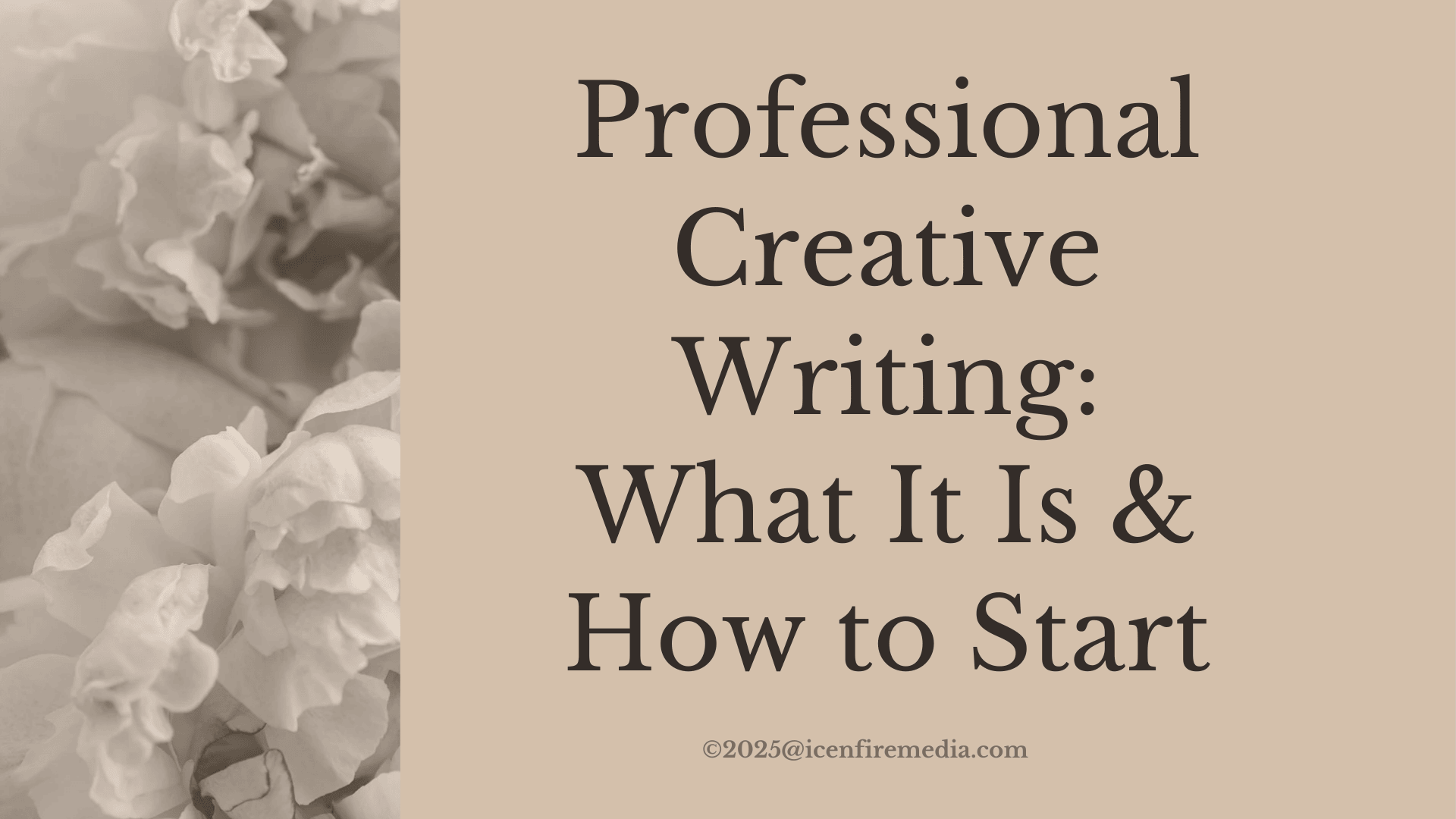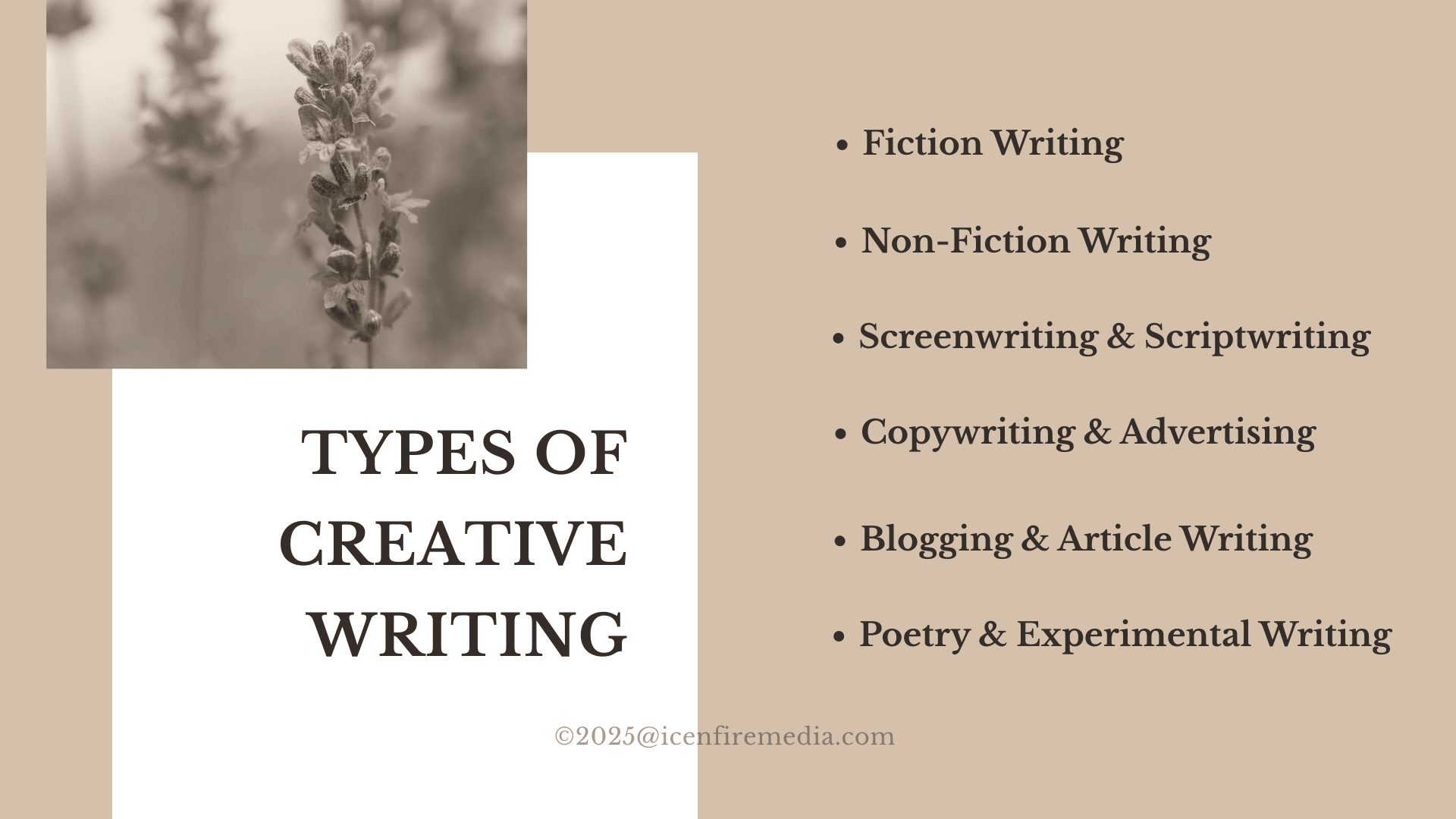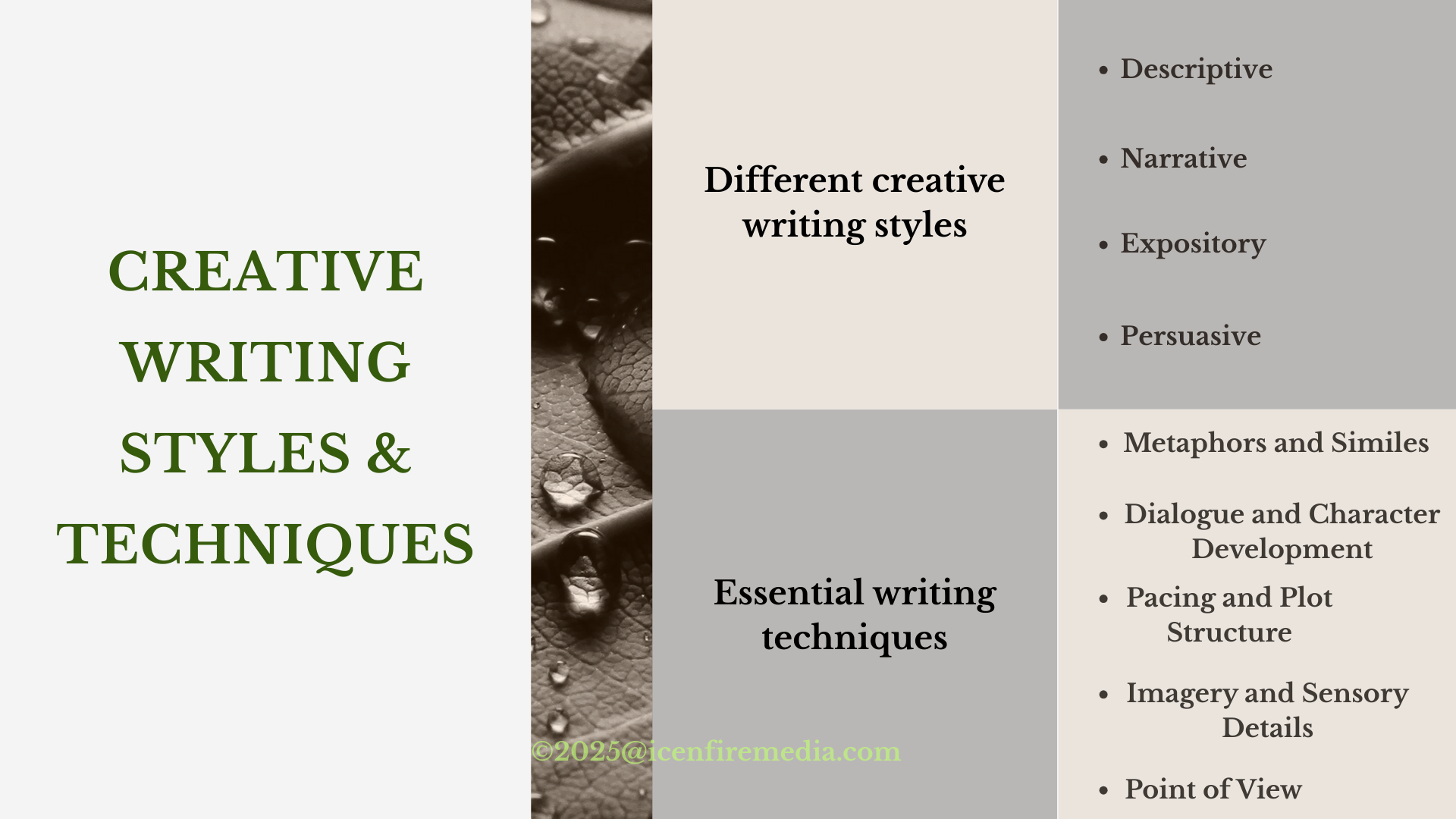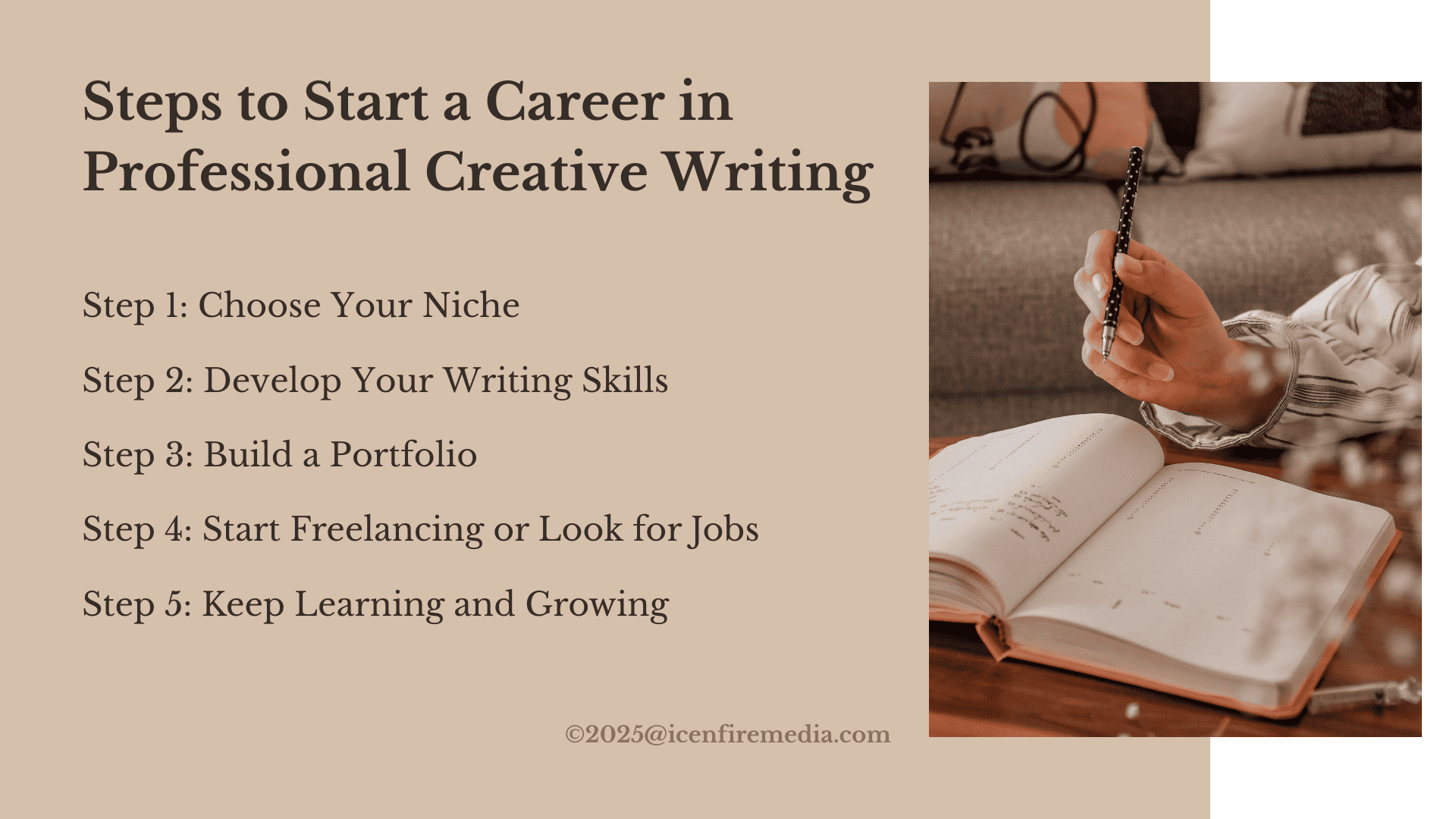
Professional creative writing is more than just putting words on a page; it’s a craft, a skill, and a powerful tool used across diverse industries. It’s the art of weaving compelling narratives, crafting evocative descriptions, and using language to inspire, persuade, and entertain. While often confused with content writing, which focuses primarily on informing or selling, professional creative writing prioritizes artistic expression and imaginative storytelling. However, both creative and content writing services play a crucial role in engaging audiences, whether through compelling brand storytelling, persuasive marketing copy, or informative blog content.
This blog post explores the world of professional creative writing, defining its essence, outlining its various forms, discussing essential techniques, and providing a roadmap for aspiring writers to launch their careers.
1. What Is Professional Creative Writing?
At its core, what is creative writing? It’s the art of using language imaginatively and originally to express ideas, emotions, and experiences. It goes beyond simply conveying information; it aims to engage the reader on an emotional and intellectual level, transporting them to different worlds, introducing them to compelling characters, and making them feel something. Professional creative writing takes this art form a step further, applying these skills within a professional context. It’s about crafting stories, poems, scripts, or other forms of creative content for a specific purpose, whether it’s building a brand’s identity, entertaining an audience, or exploring complex themes.
About creative writing, it’s important to understand that it relies heavily on literary techniques and writing techniques. These techniques are the tools of the trade, allowing writers to manipulate language, create vivid imagery, develop compelling characters, and structure narratives effectively. A list of writing techniques might include metaphors, similes, personification, alliteration, foreshadowing, and many more. For instance, instead of saying “The car was fast,” a creative writer might use a simile: “The car was as fast as a cheetah chasing its prey.” This paints a more vivid picture in the reader’s mind.
An example of a creative writing piece might be a short story about a young woman who overcomes adversity to achieve her dreams. The story would use descriptive language, dialogue, and plot twists to engage the reader and convey a powerful message about resilience and determination. Example of creative writing can be found in novels, poems, plays, screenplays, song lyrics, and even in some forms of advertising copy.
2. Types of Professional Creative Writing

The field of professional creative writing is vast and encompasses various forms:
- Fiction Writing: This includes novels, short stories, novellas, and flash fiction. Fiction writers create imaginary worlds and characters, exploring themes and ideas through narrative.
- Non-Fiction Writing: This category includes biographies, memoirs, personal essays, and narrative journalism. While grounded in reality, non-fiction creative writing uses literary techniques to make the writing engaging and compelling.
- Screenwriting & Scriptwriting: This involves writing scripts for movies, television shows, plays, and video games. Screenwriters and scriptwriters focus on dialogue, action, and visual storytelling.
- Copywriting & Advertising: Creative writing plays a crucial role in crafting compelling advertising copy, taglines, and brand stories that capture attention and resonate with target audiences.
- Blogging & Article Writing: Creative writing techniques can be used to enhance blog posts and articles, making them more engaging and readable. This can include using storytelling, vivid descriptions, and a unique voice.
- Poetry & Experimental Writing: Poets and experimental writers push the boundaries of language and form, exploring new ways to express themselves creatively.
3. Creative Writing Styles & Techniques

Different creative writing styles exist, each with its own characteristics:
- Narrative: This style focuses on telling a story, with a clear plot, characters, and setting.
- Descriptive: This style emphasizes vivid descriptions and sensory details to create a strong sense of place and atmosphere.
- Expository: This style aims to explain or inform, often using facts, examples, and logical reasoning.
- Persuasive: This style seeks to convince the reader to adopt a particular viewpoint or take a specific action.
Essential writing techniques include:
- Metaphors and Similes: These figures of speech compare two unlike things to create a more vivid image.
- Dialogue and Character Development: Realistic dialogue and well-developed characters are essential for bringing stories to life.
- Pacing and Plot Structure: Controlling the pace of the story and structuring the plot effectively are crucial for keeping the reader engaged.
- Imagery and Sensory Details: Using vivid imagery and sensory details allows the reader to experience the story through their senses.
- Point of View: Choosing the right point of view (first person, third person, etc.) can significantly impact the reader’s experience.
4. Steps to Start a Career in Professional Creative Writing

- Step 1: Choose Your Niche: Identify the type of creative writing that interests you most. Do you dream of writing novels, screenplays, or advertising copy?
- Step 2: Develop Your Writing Skills: Take writing courses, read widely in your chosen genre, and practice regularly. The more you write, the better you will become.
- Step 3: Build a Portfolio: Create sample pieces of writing that showcase your skills. Consider starting a blog or submitting your work to literary magazines or online platforms.
- Step 4: Start Freelancing or Look for Jobs: Explore freelance platforms like Upwork or Fiverr, or look for job openings in publishing, advertising, or other related industries. Networking is also crucial.
- Step 5: Keep Learning and Growing: Engage with other writers, attend workshops and conferences, and stay updated with industry trends. The writing journey is a continuous learning process.
5. Career Opportunities in Professional Creative Writing
- Publishing Industry: Authors, editors, and agents all work with creative writers.
- Digital Marketing and Content Writing Roles: Many marketing and advertising agencies hire creative writers to develop compelling content.
- Film and Entertainment Industry: Screenwriters, scriptwriters, and story editors are in demand in the film and television industry.
- Journalism, Blogging, and Freelance Writing: Creative writers can find opportunities in journalism, blogging, and freelance writing, crafting engaging content for various publications and online platforms.
Conclusion
Professional creative writing is a rewarding career path for those with a passion for language and storytelling. By honing their writing techniques, mastering literary devices, and understanding the various creative writing styles, aspiring writers can open doors to a wide range of career opportunities. Whether you dream of writing the next bestselling novel or crafting impactful advertising campaigns, the journey begins with taking the first step and committing to the craft.

Explore professional creative writing—its forms, techniques & career steps. Unlock opportunities in publishing, marketing, film & more!

